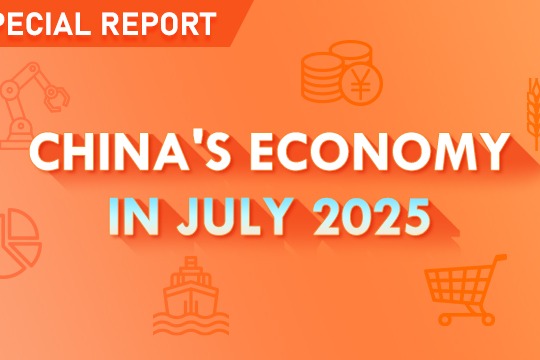Inclusive insurance rising on back of strong policy support

China's inclusive insurance sector has gained strong momentum in recent years, powered by a string of government initiatives.
Once confined to small pilot schemes, it now extends to gig workers, migrant households and even entire city populations. Growth has been striking, but insiders and experts caution that the industry is still in its infancy, weighed down by familiar growth pains.
The sector has been buoyed by steady policy support.
In June, the National Financial Regulatory Administration and the People's Bank of China unveiled a joint plan to build an integrated inclusive finance system, covering services, credit and insurance, with a strong push to strengthen the insurance framework.
"China's inclusive insurance policy has entered a new stage of systematic deepening," said Xing Li, a researcher at the Chinese Academy of Financial Inclusion at Renmin University of China, speaking at a seminar on inclusive insurance in Beijing on Wednesday.
China's first experiments started nearly two decades ago with agricultural pilots and, subsequently, micro life insurance for vulnerable rural and urban groups. Xing describes those initiatives as the "1.0 version "of inclusive insurance.
Currently, several innovative insurance products and business models have emerged. Chief among them is Huiminbao, a city-tailored health insurance sold at modest premiums to plug gaps in public healthcare.
For many, it marks the "2.0 version" of inclusive insurance, recognized as a crucial means to enhance social stability and support broad economic development.
The model has expanded rapidly. In Shenzhen, a comprehensive package now protects 1.4 million gig workers, ranging from food delivery riders to domestic helpers, by combining accident and medical coverage. A report released by Nankai University noted that by 2023, 193 Huiminbao products had been launched across 30 provinces and regions, with the total insured reaching 168 million.
"One of the key breakthroughs in this stage lies in government and industry working together, rather than a single department's action," said Xu Leyang, a general manager at Ping An Property and Casualty Insurance, at the seminar.
He pointed to Huiminbao as a model of cooperation between local health authorities and commercial insurers.
Yet the momentum has not erased nagging obstacles. "One of the most striking tensions is between surging demand for more diverse protection and the sector's current ability to supply it," said Li Xiaolin, who leads a risk governance research center at the Central University of Finance and Economics. At the seminar, he emphasized that meeting consumer expectations now requires a diversity of products.
An even deeper conflict lies in balancing inclusivity with sustainability. Products designed for vulnerable groups often need subsidies to survive. Without them, insurers acknowledge, uptake would fall sharply.
Bei Duoguang, president of the Chinese Academy of Financial Inclusion, added: "The pay-first, claim-later model of insurance tests the confidence of vulnerable households." That feature, he noted, has slowed the spread of inclusive insurance worldwide.
He stressed that in the early stages, government involvement is essential, but lasting success depends on the joint efforts of regulators, insurers and social organizations.
Dirk Reinhard, vice-chairman of the Munich Re Foundation, likened the task to building a house. "If you only have a good roof but no solid walls, it won't be stable and cannot protect its residents."
Industry consensus is forming around two priorities: building smarter digital infrastructure and upholding commercial discipline. Experts have urged regulators and insurers to promote new insurance infrastructure and establish cross-institutional, cross-sector information-sharing platforms "to better track customer volumes and risk structure changes".
Xu Jinghui, chairman of the Renda Foundation for Financial Inclusion, stressed at the seminar that inclusive insurance must uphold its commercial nature. "It should realize scientific pricing in line with insurance principles and business rules, and leverage technology to enable low-cost operations. Only then can we break the so-called impossible triangle of low premiums, high coverage and profitability," he said.
The market potential remains large.
According to the Chinese Academy of Financial Inclusion, inclusive insurance premiums reached 360 billion yuan ($50.4 billion) in 2023, about 7 percent of the total. By 2030, that figure could reach 930 billion yuan, lifting its share to 15 percent of an industry expected to exceed 7 trillion yuan.
lijing2009@chinadaily.com.cn




































